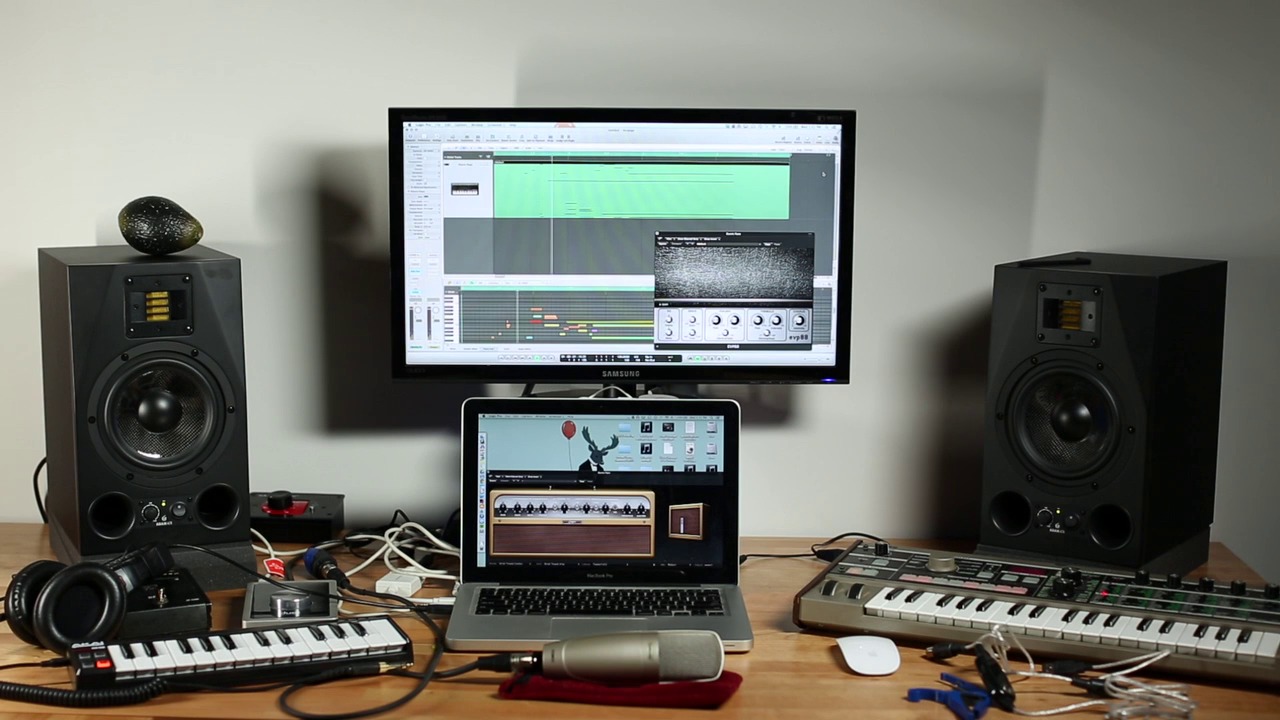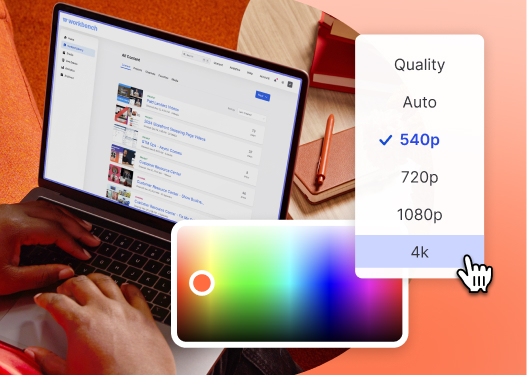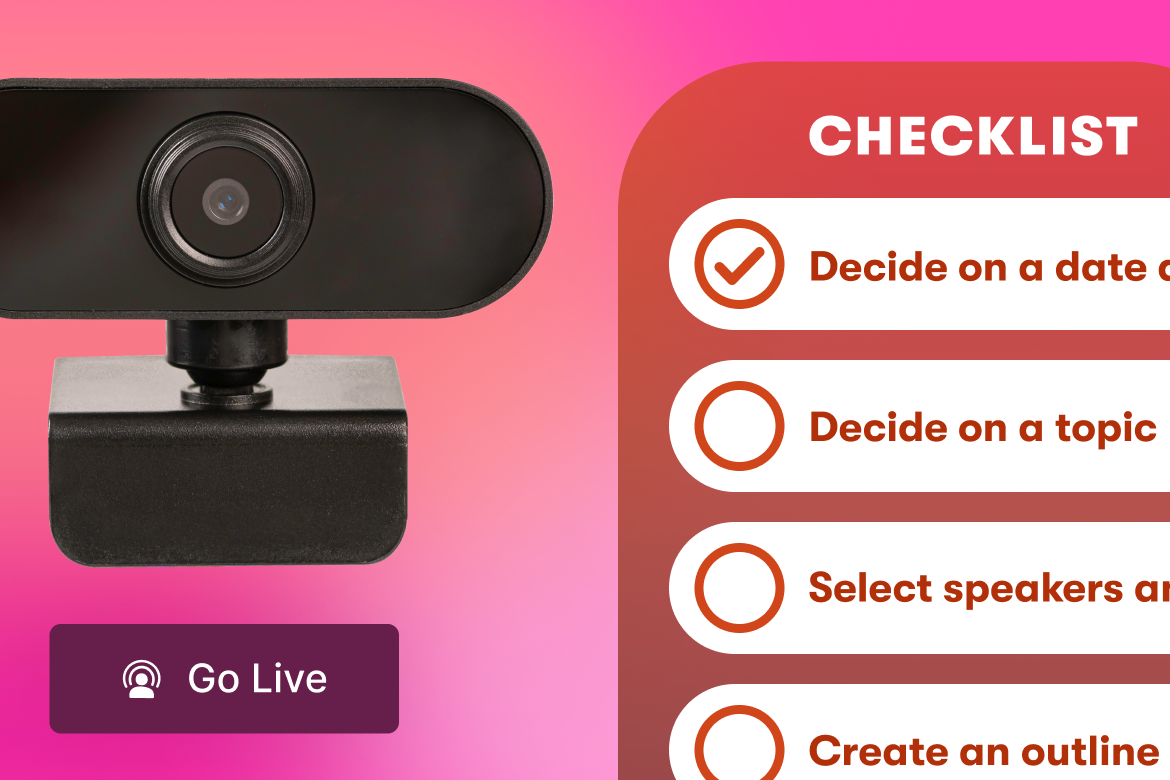How to Choose Background Music for Your Marketing Videos
Learn where to find good royalty-free music and how to choose the best background track for your video.
July 20, 2023
Topic tags

Background music may seem like a minor detail in a video, but it actually plays a powerful role. It sets the pace, drives your video forward, and adds emotion to your message. At Wistia, background music has helped us strengthen our brand and maintain consistent quality across all our video content.
Choosing the right music track for your video can get tricky — but we’re here to help! You don’t need to be a professional musician to have an ear for what works. You just have to know what to look for. That’s why we’ve rounded up some tips to help you pick the perfect song for your next video project.
Before we dive into how to find the perfect song, let’s talk about where you can find free music.
Where to find free background music for videos
From Wistia’s Music Collection to music licensing sites, we rounded up some places that offer high-quality music that can amp up the impact of your videos without costing you a dime.
Add background music in Wistia
When you edit your videos with Wistia’s online video editor, you can easy add royalty-free music to them. What’s more, you can browse by type of video and mood to find the best-fitting background song. And thanks to a nifty technology we’ve coined Smart Tracks, the background music you choose will automatically match the length of your video, no matter what adjustments you make to your clips.
If you’re editing outside of Wistia, we offer royalty-free music with entirely free tracks from our music collection. Whether you’re creating an engaging product walkthrough or a think piece for LinkedIn, we have something that will help you set the right mood.
Get rights to license music
We know several music licensing sites that can help you find the perfect royalty-free music for your videos. Artlist.io, Epidemic Sound, Marmoset Music, Tunefruit, FirstCom, or MusicBed are all great places to check out.
You can also use music from popular artists or their labels. They might charge you a reasonable rate or simply ask you to include them in the credits. When working with a label, you can use a site set up for publishing royalties like ASCAP, BMI, or SESAC to easily find the necessary rights and permission contacts.
Another great option is to hire a composer or local band. At Wistia, we’ve approached local bands and artists to help make music for our videos! You can set up an exclusive access agreement with the creators and buy the rights to use the music, and they can reuse it.
How to choose the right music for your video
Now that you know where to find great background music for your videos, let’s go over some tips for picking the best song and seamlessly incorporating it into your video.
All-in-one Video Platform
Create, Edit, And Host Videos
Choose music that evokes a specific emotion
How do you want your audience to feel when they watch your video?
Should they be excited about your new product launch? Warm and fuzzy from your customer testimonial? On the verge of laughing at your candid in-office culture clip?
Whatever emotion you’re aiming for, be sure to keep it on the forefront of your mind when picking a song for your video. Take the time to explore different music options and experiment until you find the perfect match that enhances the emotional impact of your video.
Avoid corny digital instruments
If you’re looking for an organic-sounding song with instruments like acoustic guitar, piano, or indie rock drums, find a track with the real thing. Although some high-end samples sound amazing, digital versions of acoustic instruments often make a recording (and ultimately your video) feel corny and dated.
One way to avoid making this mistake is by comparing and contrasting the sonic qualities of real songs with the digital samples on the music site you choose. It won’t take long before you can tell the difference between the good, the bad, and the corny.
For any serious musicians doing video marketing, we can also speak to the creative process behind our free background music. Curious to know about the gear that helps us create our custom music? This post has all the software, hardware, and instrument pointers you’re searching for.
Edit the song to fit the flow of your video
You might have a pop song in mind that is stylistically and emotionally the right fit for your video. However, chances are the transitions probably won’t jive with your video’s narrative structure. Most pop songs you hear on the radio have a standard structure with four or five parts: verse, pre-chorus, chorus, another verse, chorus, bridge, and a massive double chorus to bring it home.
We recommend looping (repeating) sections of the song to better fit the flow of your video. You can repeat things more than you think when it comes to background music. Don’t be afraid to loop the verse, cut the bridge, cut the last chorus, etc.
Keep background music in the background
In many cases, the most successful background music is the music you didn’t even know was there. If someone’s talking on screen, don’t let the music get in the way! Watch out for songs with sonic elements competing with the human voice. Vocals and group whoa-ing clearly fall into this category, but poppy piano melodies and even whistling will also compete with the human voice.
You should also consider volume as a factor. If the volume is too high, the music will overpower the spoken narrative of your video, which is no good. If background music is too low, it can draw attention to itself by making the viewer strain to hear it. The goal of background music is to invisibly assist your video, not create a distraction.
Mixing the music volume in your video takes practice, and there’s no exact formula for the music’s level relative to the voice. It’s all about training your ears to feel when the music is sitting just right in the mix.
Jazz up your videos with music
Music plays a vital role in shaping how people perceive a video. When you master the art of selecting the right music, you can drive your video’s pace, influence your audience’s mindset and emotions, and cleverly mask any audio blips or tough edits. Embrace this opportunity to enhance the power of your video and create even stronger connections with your audience.






